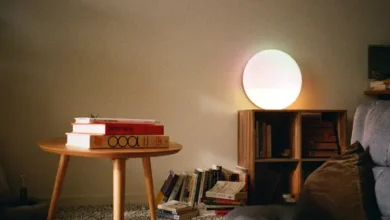Mariana Holert: Redefining Contemporary Art Through Radical Storytelling

Introduction
Mariana Holert stands as one of the most compelling and unconventional voices in contemporary art, crafting immersive experiences that blur the lines between reality, fiction, and collective memory. Through multimedia installations, experimental films, and participatory performances, Holert challenges traditional narratives, inviting audiences to question their perceptions of history, identity, and societal structures. Her work—often described as a fusion of speculative archaeology and poetic activism—examines forgotten histories, marginalized voices, and the fragile nature of truth in the digital age. This article delves into the key themes and methodologies that define Holert’s practice, exploring how she transforms galleries into spaces of radical inquiry and emotional resonance.
1. Speculative Archives: Unearthing Lost Narratives
At the core of Mariana Holert’s practice lies her fascination with archives—not as static repositories of facts, but as living, contested spaces where history is continuously rewritten. Her seminal project The Museum of Unclaimed Histories (2019) reimagines archival practice by assembling fragments of abandoned memories, from discontinued government files to erased personal diaries, presenting them as an interactive installation where visitors contribute their own interpretations. Holert treats historical documents as speculative fiction, using them to construct alternative timelines that expose the biases and omissions of official records. In Whispers from the Void (2021), she collaborated with forensic audio technicians to reconstruct suppressed speeches from 20th-century political movements, playing them in gallery spaces as ghostly, fragmented echoes. This approach doesn’t just revisit the past—it actively reanimates it, forcing audiences to confront how history is shaped by power and who gets to decide what is remembered or forgotten.
2. The Body as Contested Territory: Performance & Embodied Memory
Holert’s work frequently employs the human body as a site of resistance and reclamation, particularly in her durational performances that interrogate trauma, migration, and gender. The Weight of Absence (2020), a 72-hour live installation, featured performers carrying sacks filled with soil from border zones around the world, their movements tracked by motion sensors that translated displacement into real-time data projections. This piece, like much of her performance art, exists at the intersection of choreography and activism, transforming individual pain into collective testimony. For Skin of the Earth (2022), Holert worked with refugee communities to create body casts embedded with soil from their homelands—a visceral meditation on belonging and erasure. Her approach to the body rejects spectacle in favor of slow, deliberate rituals that make invisible struggles tangible, using endurance as a metaphor for resilience.
3. Digital Ghosts: Technology as a Medium of Haunting

In an era dominated by algorithms and virtual identities, Holert’s work probes the eerie afterlife of digital presence. Her You Are Already Gone series (2018–present) uses AI to generate posthumous social media posts from deceased individuals, raising unsettling questions about consent, legacy, and the commodification of grief. These synthetic utterances—poetic, fragmented, and eerily plausible—are displayed on suspended screens that flicker like dying monitors, forcing viewers to grapple with the ethical implications of digital resurrection. Similarly, 404: Memory Not Found (2023) explores link rot in the internet age, projecting decaying web pages onto crumbling clay tablets that gradually disintegrate during the exhibition. Holert doesn’t just critique technology; she weaponizes its failures, turning glitches into poignant metaphors for cultural amnesia in a world drowning in disposable information.
4. Radical Pedagogy: Art as Collective Unlearning
Beyond traditional exhibitions, Holert has pioneered experimental education formats that challenge institutional hierarchies. Her School for Temporal Disobedience (a nomadic workshop series since 2017) employs role-playing games, counterfactual historiography, and collaborative myth-making to “unlearn” dominant narratives. Participants might spend a day reenacting a 19th-century strike with altered power dynamics or co-authoring a constitution for an imaginary society where memory is the primary currency. These projects reflect Holert’s belief that art’s greatest power lies not in answers but in destabilizing certainties—creating spaces where history becomes a verb rather than a noun. This pedagogical approach has influenced a generation of artists working at the nexus of art and social practice, proving that the most radical art might not hang on walls but unfold in the minds it irrevocably changes.
5. Future Fossils: Ecology of Tomorrow’s Ruins

Library of the Unfinished Century (2024) consists of ceramic data tablets inscribed with climate statistics, designed to chemically degrade at rates mirroring actual ecosystem collapse—a literal countdown to erasure. Meanwhile, her Museum of Plastic Fossils (a touring installation) casts microplastics in bronze, treating pollution as future archaeological artifacts. These works exemplify her shift toward “urgent archaeology,” a practice that treats contemporary crises as layers in an unfolding stratigraphy. By materializing abstract threats like climate change into tactile, almost ceremonial objects, Holert makes the imperceptible palpable, transforming galleries into sites of visceral encounter with the consequences of human action.
Conclusion
Mariana Holert’s work resists easy categorization, existing instead in the fertile gaps between art, activism, and speculative philosophy. Whether resurrecting silenced voices through technology, choreographing collective acts of remembrance, or crafting relics from our planet’s impending collapse, she compels us to reconsider how memory shapes reality—and who bears the right to shape memory itself. As her projects continue to evolve across mediums and continents, one truth remains constant: the past is never truly past, only waiting for the right artist to reactivate its dormant questions.




